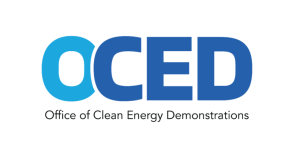 On October 3, 2024, the Department of Energy Office of Clean Energy Demonstrations announced a Notice of Funding Opportunity (NOFO) to fund up to $400 million for clean energy projects in rural and remote areas via its Energy Improvements in Rural or Remote Areas program. The NOFO will provide awards ranging from $2 million – $50 million, with plans to fund 20 to 50 projects. Awards will require a non-federal cost share, range across four topic areas, and target projects in rural and remote communities with populations of 10,000 people or fewer.
On October 3, 2024, the Department of Energy Office of Clean Energy Demonstrations announced a Notice of Funding Opportunity (NOFO) to fund up to $400 million for clean energy projects in rural and remote areas via its Energy Improvements in Rural or Remote Areas program. The NOFO will provide awards ranging from $2 million – $50 million, with plans to fund 20 to 50 projects. Awards will require a non-federal cost share, range across four topic areas, and target projects in rural and remote communities with populations of 10,000 people or fewer.
Eligibility
Applications are open to a wide range of entities, including for-profit and nonprofit organizations, state and local governmental entities, Indian Tribes and Tribal organizations, institutions of higher education, rural electric cooperatives, incorporated and unincorporated consortia, farming associations and cooperatives, and labor unions. Generally applicants must be U.S. entities, but foreign entities may be allowed to participate in limited circumstances. Applicants must identify at least one area in the U.S. or U.S. territories with a population of up to 10,000 people which will benefit from the proposal.
Applicants must propose projects that support at least one of the following:
- Providing or modernizing electric generation facilities;
- Improving overall cost-effectiveness of energy generation, transmission, or distribution systems;
- Siting or upgrading transmission and distribution lines;
- Reducing greenhouse gas emissions from energy generation in rural or remote areas;
- Developing microgrids; and
- Increasing energy efficiency.
Topic Areas
Applicants must choose one of the following four targeted topic areas for their project’s application:
- The Open Category topic area supports diverse energy infrastructure projects that address specific local challenges. Eligible technologies include solar, wind, hydropower, geothermal, biomass, battery storage and microgrids. Projects may also electrify equipment or repower existing renewable systems.
- The Dual Use and Co-Location topic area promotes energy projects integrated with other sectors, maximizing resources and operational efficiency. Examples include agrivoltaics, where solar panels provide both electricity and crop protection, and renewable energy systems installed at water treatment facilities.
- The Smaller-Scale Community-Centered Projects topic area supports initiatives designed by and for local communities. Typical initiatives include rooftop solar installations on public buildings and microgrids for schools or shelters.
- Finally, the Isolated Microgrids and Unelectrified Buildings topic area targets remote communities that lack grid access or rely on outdated energy systems. Projects may include developing standalone microgrids powered by renewable sources like solar with battery storage or connecting unelectrified homes to sustainable power systems.
Table 1 outlines the eligible topic areas, maximum funding available per project and per topic area, and cost share requirements. Note that for all topic areas, certain entities (e.g. Tribal governments, nonprofits, public sector entities, etc.) may be eligible for a lower cost share).
| Table 1: Topic Area Details | |||
| Topic Area | Award/Project | Expected Total Awards Limit | Applicant Cost Share (lower/normal)* |
| Open Category | $10M – $50M | $150M | 20% / 50% |
| Dual use and co-location | $10M – $50M | $175M | 20% / 50% |
| Smaller-scale community-centered | $2M – $10M | $50M | 5% / 20% |
| Isolated microgrids & unelectrified buildings | $2M – $10M | $25M | 5% / 20% |
Application
The NOFO relies on the two-stage application process common to DOE funding programs. Applicants must first submit a short concept paper. Concept papers must focus on a single project aligned with one of the program’s topic areas, and provide essential information such as the project title, topic area, a brief description of the project’s attributes, the project team’s composition, eligibility, and the location of the communities involved. Importantly, applicants must demonstrate how the project will involve community members and workers throughout planning and execution, ensuring inclusive decision-making and mitigating potential negative impacts. Based on its review of the concept papers, DOE will then issue letters encouraging some applicants to submit full applications.
Concept Papers are due no later than 5:00 pm ET on February 27, 2025.
Full Applications will be due within 100 days of receipt of notification by the DOE, by a program deadline of August 28, 2025.
Pillsbury’s Energy team is available to provide expert assistance with structuring applications, ensuring compliance, and helping applicants secure funding to achieve their clean energy goals. Reach out to learn how we can support your efforts through the ERA Program.
RELATED ARTICLES
Big Data Meets Big Green: Data Centers and Carbon Removal Compete for Zero-Emission Energy
 Gravel2Gavel Construction & Real Estate Law Blog
Gravel2Gavel Construction & Real Estate Law Blog


